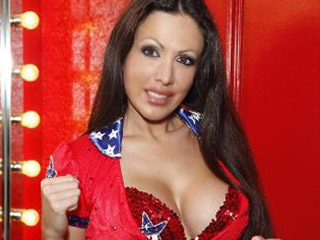
This week, we're exploring the furry kink. The furry fandom is a unique and multifaceted subculture centered around anthropomorphic animal characters.
These characters exhibit human-like qualities such as intelligence, facial expressions, speech, and often stand on two legs while wearing clothing. Beyond its character-driven core, the term "furry fandom" also encompasses the community of individuals who engage with this subculture, both online and at physical conventions.
The roots of the furry fandom can be traced back to the underground comix movement of the 1970s, a genre known for its explicit content. In 1976, a pair of cartoonists established Vootie, an amateur press association dedicated to animal-focused art, some of which contained adult themes. Over time, this association gained followers, and contributors began convening at science fiction and comics conventions.

Photo Credit: Deviant Art
The concept of "furry" as we know it today emerged around 1980 during a discussion at a science fiction convention about anthropomorphic characters in science fiction novels. This discussion led to the formation of a discussion group that met at various conventions. The term "furry fandom" gained prominence in fanzines by 1983, eventually becoming the standard name for the genre by the mid-1990s.

Photo Credit: Furry Fandom
Furries engage in a variety of creative activities, including visual art, conventions, literature, and online communities. The creation of art and literature holds particular significance within the fandom. Notably, the community is predominantly male, with surveys consistently reporting around 80% male respondents.
During the 1980s, furry fans began publishing fanzines and organizing social gatherings. In 1989, the first furry convention, Confurence 0, was held in Costa Mesa, California. Furry conventions provide furries with a physical space to buy and sell artwork, participate in workshops, and socialize. These conventions have grown significantly over the years, with events like Anthrocon and Midwest FurFest drawing thousands of attendees and contributing to local economies.
Here are some furry party flyers by Mark Merlino from the late 80s. You can find more on https://t.co/K2R5oohq2A pic.twitter.com/qgaolC1vDq
— if you are sober or cold (@GuloChomp) January 22, 2019
The subsequent decade saw the rise of the internet as a primary means for furries to connect. Newsgroups like alt.fan.furry and virtual environments like MUCKs became popular for online interaction. The internet plays a crucial role in the furry fandom, with numerous websites and online communities dedicated to furry art and culture. Platforms like Fur Affinity, Inkbunny, and social networks like Furry 4 Life foster connections among furries worldwide.

Photo Credit: Kick Starter
Some furries with craft skills create plush toys, known as plushies, and elaborate costumes called fursuits. Fursuits are often worn for fun, parades, convention masquerades, dances, or charity events. Role-playing, using anthropomorphic animal characters called fursonas, is common in MUDs, internet forums, and mailing lists. The creation of fursonas is a common and meaningful practice among furries. The most common fursona species are wolves, foxes, dogs, red pandas, mustelids, marsupials, big cats, and dragons. These characters can be traced back to allegorical novels, science fiction, and fantasy works, as well as animated cartoons. A survey conducted in 2007 revealed that furries have a strong affinity for cartoons and science fiction, distinguishing them from the general population.
The furry fandom encompasses a diverse range of sexual orientations, with surveys indicating varying proportions of homosexuality, bisexuality, heterosexuality, and alternative relationships. Sexual aspects, including erotic art and cybersex, exist within the subculture, though their significance varies among individuals. Media coverage of the furry fandom has evolved over the years, from initial sensationalized portrayals focused on sexuality to more balanced and informed reporting. Recent coverage aims to dispel myths and stereotypes associated with furries. The fandom's growth even prompted Disney to market a film, "Zootopia," to furries before its release.
The furry fandom is a vibrant and diverse subculture characterized by creativity, community, and self-expression. While its roots may be traced back to the 1970s, it has evolved and grown significantly, with its own conventions, online communities, and unique cultural practices. Understanding the furry fandom requires a nuanced perspective that acknowledges its multifaceted nature and the varied interests and identities of its members.





















